2023 Toyota Prius First Drive Review

FAST FACTS
| Engine: | 2.0L I4 w/ electric motor (x2 AWD) |
| Output: | 194 hp, 139 lb-ft (FWD) / 196 hp, 139 lb-ft (AWD) |
| Transmission: | 1AT, FWD/AWD |
| US fuel economy (MPG): | 57/56/57 (FWD LE), 49/50/49 (XLE/Limited AWD) |
| CAN fuel economy (L/100KM): | 4.8 / 4.7 / 4.8 |
| Starting Price (USD): | $28,545 (inc. dest.) |
| As-Tested Price (USD): | $36,960 (inc. dest.) |
| Starting Price (CAD): | $38,310 (inc. dest.) |
| As-Tested Price (CAD): | $44,810 (inc. dest.) |
This is the 2023 Toyota Prius. No, really. I still can’t quite believe it either, and I spent a whole day driving the thing.
Toyota is closing out a busy year with a full redo of the car that made “hybrid” a household word. For over two decades, the Prius has been the source of astounding fuel economy … and the butt of some jokes all because of its gawky looks. Well, no more. In fact, Toyota is out here pulling double-duty with the new car: not only is the Prius stylish, more powerful, and better to drive, but it should serve in the dictionary as the very definition of a glow-up.
Get a Quote on a New 2023 Toyota PriusShow-stopping looks
Okay, so we have to start with the styling. The world has had a few weeks to take in this new Prius look, and we talked about it at the LA debut last month. Needless to say, it looks stellar in person. The design is crisp, clean, and confident, something we haven’t been able to say about the Prius since… uh, forever? One of my personal favorite aspects is the rear light cluster, especially with a high-contrast body color like white. It almost looks as if the wrapper has peeled back to show the taillights. Higher-spec models sit on 19-inch wheels, which look great but do eat into the Prius’ fuel economy figures. Judging by how often people stopped and asked us about the car during our drive, the Prius is going to demand attention wherever it goes.
There’s an emphasis on power for the fifth-gen Prius, with both the gas and electric components seeing big gains. A larger 2.0-liter gas engine now sits under that low hood. On its own, the Atkinson-cycle four-cylinder produces 150 horsepower, more than the combined 121 system horsepower in the outgoing model. The electric motor is up to 111 hp for this generation, as well. Combined figures are 194 hp for the front-drive model.
The all-wheel drive model returns (in fact, it’s the only option in Canada), and gets its own upgraded electric motor on the rear axle, boasting almost 500-percent more power than before—a jump from 7 to 40 hp. The complexities of adding these inputs all together means the Prius AWD peaks at 196 hp. Next year, a more powerful 220-horsepower plug-in Prime will join the ranks.
The big power increases have got all the headlines, but Toyota has also revamped that all-paw powertrain. The previous model only woke the rear motor up at low speeds, when the front tires couldn’t find grip. This new one works across the spectrum, similar to the AWD setup in the RAV4, Camry, Corolla, and others. More than that, it also works during cornering.
Classy inside, too
Dramatic changes happen inside the new Prius too. As standard, the fifth-gen model comes with a bZ4X-inspired front instrument panel, set deep in the dashboard. It helps break up a long dash, but also eliminates the need for a head-up display. It’s a nice feature that hits you with that “why didn’t we do this earlier?” feeling. You can set the wheel nice and low, and still see all the important info clearly.
SEE ALSO: 2023 Toyota bZ4X First Drive Review: The RAV4 of EVs is HereA wraparound dashboard enhances the feeling of front-seat space, as does the slimline dashboard. Material quality is generally pretty good, with only the door armrests and not-fooling-anyone carbon weave trim really raising eyebrows. There are clever touches, like the dual-plane climate control buttons on the dashboard, which take up less space than a flat two-row, and are easier to use without looking. I dig the smart phone holster beside the shifter too; too many wireless pads don’t actually keep a phone charging, but this does.
There were concerns when the Prius debuted that this Lambo-like raked windshield would impact visibility. To be honest, after driving it back-and-forth with the current Prius, there’s not much of a difference. Yes, the A-pillars extend further, but there are larger front quarter-windows to balance that out. The old split-glass tailgate is gone, so the view out of the rearview mirror is tight—but on the Limited, a digital mirror is just a switch away.
Now I’m not going to pretend Toyota giving the Prius the She’s All That treatment hasn’t cut into cabin space. That two-inch chop to height has a similar reduction in front-seat headroom. There’s an inch less out back too, leaving this 5’10” person wedged in like carry-on on a regional flight. A longer wheelbase does free up legroom, however. Toyota says the front seats feature new moldings for better support and comfort. I didn’t find them dramatically different to what came before, but a longer drive might shed more light on that.
We asked Toyota if this step back in space worried the team. The short answer was no; the long answer was that the company has the Camry, Crown, RAV4, and Highlander if folks want more practicality with their hybrids. Prius established the idea of hybrids almost a quarter century ago; people know what the H-word means now. Or, as Toyota senior planner Thomas Sondej Jr said to us: “the path we took to get here isn’t the one we get to take now.”
An 8.0-inch screen is standard, running the latest Toyota Multimedia system. A 12.3-inch setup is optional. No matter the size, the new system is quite good, with the major bugbears being a cumbersome navigation setup and, on the larger screen, a volume knob that’s waaaaay over to the side. Apple CarPlay and Android Auto are both wireless.
SEE ALSO: 2023 Toyota Corolla Hybrid AWD First Drive Review: All-Weather Fuel MiserSmooth road manners
On the road, the newfound power is immediately noticeable. Not only is the Prius quicker in short bursts—a dash to 60 mph (96 km/h) is now a low-7s affair, not 10 seconds—but the more powerful EV motors mean it can avoid waking up the gas engine for longer. When the 2.0-liter does join the party, it’s noticeable, but less strained than the old engine. Toyota says this is a sportier drive than before, though the XSE trim is being kept for the later Prime.
As is, the regular Prius is tidy to drive, with light steering and consistent brakes. It does feel more eager to point its low nose into corners this time around, though. Under the skin sits the second generation of the TNGA platform, which had the pretty typical design brief of less weight, but more rigidity. There’s moderate lean through corners, and curb weight is only up slightly, but as the heavy bits are down low, the Prius still feels reasonably light on its feet.
Folks in warmer climates like the launch event probably won’t notice much difference with the AWD model. Push the Prius through a corner and there’s a slight nudge from the back to keep it in line, but it’s all very organic in operation. Toyota US expects about 30 percent of sales to go to the all-paw Prius; Canada is looking at 100 percent, naturally.
Toyota Safety Sense 3.0 is standard on all 2023 Prius models, and that includes Proactive Driving Assist. The best way to describe it is adaptive cruise control when you’re not using cruise control. The system will subtly alter the steering or apply the brakes if it senses the car moving out of its lane, or getting a little too close to the car in front. For some, it will be about as appealing as that other kind of PDA. (No such worries in Canada, where the assist won’t be available). One feature that should find more acceptance is the dynamic ambient lighting. If the Prius is sat at a light and the lead car has pulled away, the lights will pulse to let the driver know in case they weren’t paying attention. My advice? Pay attention!
Even though it’s got around 60 percent more power than before, the Prius is rated as highly as 57 mpg combined for the front-drive LE model. The least-efficient AWD models (XLE and Limited) still pull off 49 mpg combined (4.8 L/100 km).
SEE ALSO: 2023 Toyota Highlander First Drive Review: It’s Turbo TimeDollars and sense
Pricing for this newly stylish hybrid kicks off at $28,545 in America, including destination. That nets a front-drive LE; XLE is $31,990 and the range-topping Limited is $35,560. AWD is a $1,400 option on all trims.
Canada goes simpler, with only the XLE AWD ($38,310 CAD), and Limited AWD ($44,810 CAD), including destination.
(Editor’s Note: An earlier version of this review had mistakenly included destination charges from another model for Canadian pricing. It has since been corrected.)
SEE ALSO: 2023 Kia Niro EV and Hybrid First Drive ReviewThe closest competitor might just be the new Kia Niro we recently sampled. Both cars are very style-focused, the Kia in its weirdness and the Toyota in its exotic nods. Folks wanting more passenger and cargo space will definitely find it in the Niro, especially those coming out of an existing Prius who don’t want even less space. That said, the Niro’s meh drivetrain feels like it was targeting the last-gen Prius.
Verdict: 2023 Toyota Prius First Drive Review
Toyota is touting the “Hybrid Reborn” tagline for the 2023 Prius. It’s a perfect summary for a dramatically changed car, one that needed to shed its staid reputation of old. It’s less practical, sure, but with a dozen other hybrid offerings in the family, Toyota doesn’t have to cater solely to driver’s heads. With its eye-catching looks and vastly more power with no hit to fuel economy, this latest Prius is all about heart.
FAQs
How much does the 2023 Toyota Prius cost?
The new model starts from $28,545 for the front-drive LE model, including destination. Canada goes AWD-only, and starts from the mid-level XLE, for $38,3100 CAD.
When can you buy the 2023 Toyota Prius?
Dealerships should begin offering the latest Prius in January 2023.
Does the 2023 Toyota Prius offer a plug-in model?
Not yet; when it does, expect it to be more powerful, at 220 hp.
Become an AutoGuide insider. Get the latest from the automotive world first by subscribing to our newsletter here.
LOVE IT
- Those looks
- That power
- Seriously, those looks!
LEAVE IT
- Less passenger space
- Less cargo space, too
- Strangers will keep asking you questions

Kyle began his automotive obsession before he even started school, courtesy of a remote control Porsche and various LEGO sets. He later studied advertising and graphic design at Humber College, which led him to writing about cars (both real and digital). He is now a proud member of the Automobile Journalists Association of Canada (AJAC), where he was the Journalist of the Year runner-up for 2021.
More by Kyle Patrick



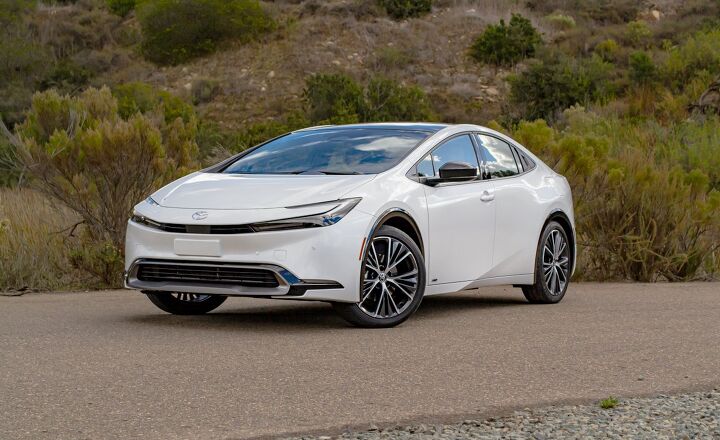
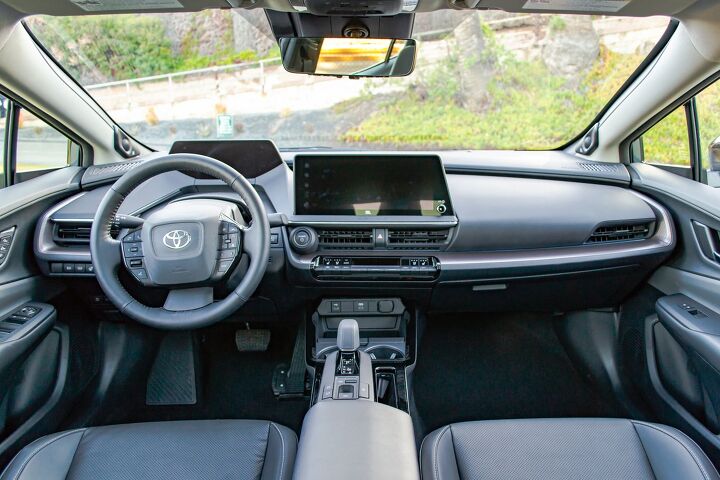




















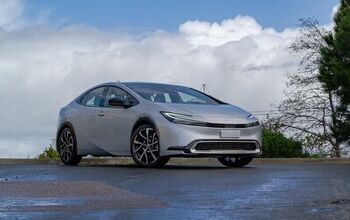

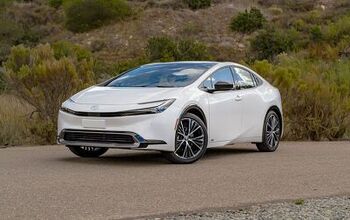
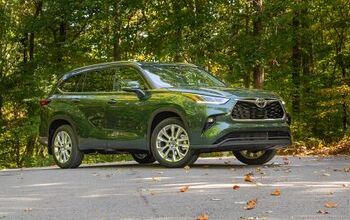



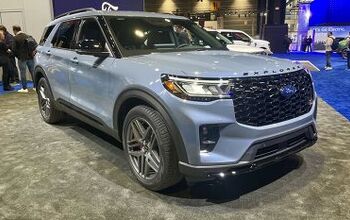
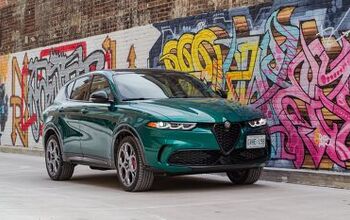
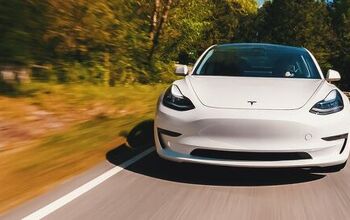
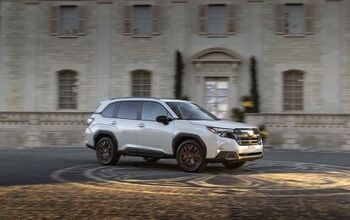




Comments
Join the conversation
Guessing you didn't do any nighttime driving; you should. I'd be interested to know the Hi-LO beam light patterns on the road out of the narrow-slotted headlight design seen on the new Prius.